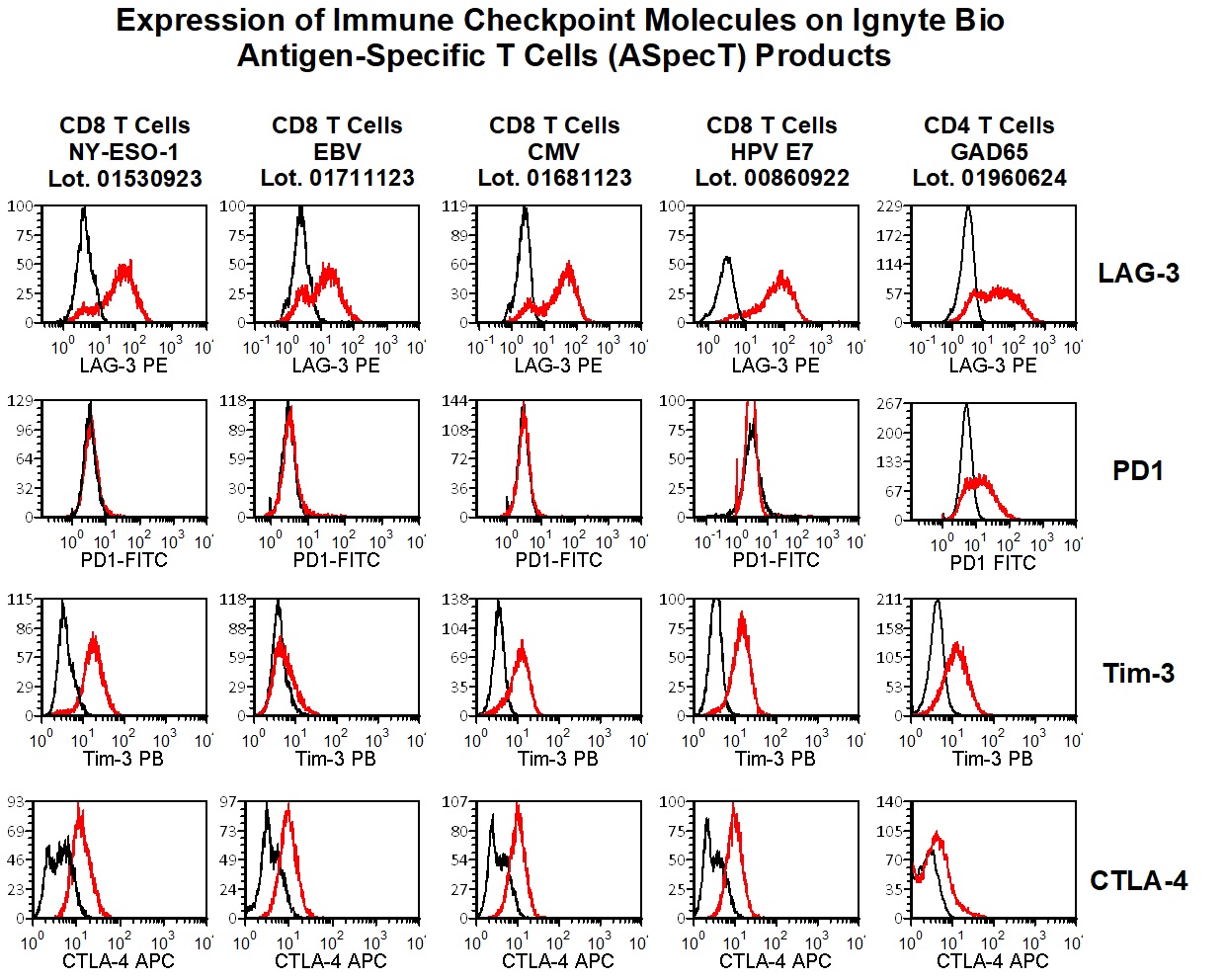Antigen-Specific T Cells (ASpecT): A Tool for Immuno-Oncology (IO) Studies
Our scientists were among the first to develop custom Antigen-Specific T cells (ASpecT) for research use and have created them against a diverse range of targets, including viral, tumor, and self-antigens.
We’re now developing the next generation of ASpecT (both CD4+ and CD8+) to target some of today’s most prevalent and challenging diseases. Ignyte Bio’s ASpecT products have the following characteristics:
- Typically generated using multiple in vitro stimulations with peptide antigens
- Not immortalized or genetically modified, so they more closely mimic physiological T cells
- Specificity analyzed using the cognate peptide/MHC tetramer binding
- Functional activity is demonstrated by interferon-gamma (IFN-γ) and cytotoxicity assays for CD8 products, or antigen-specific proliferation assay for CD4 product
- Active and ready for use in an assay directly after thawing
Uses of ASpecT in IO Research
Antigen-specific T cells have historically been important in antigen discovery studies. They are also a valuable tool as effectors in various cell-based assays that assess antigen-presentation (e.g., potency of a vaccine construct), as well as effect of various factors that modulate a T cell response, including various agonists and antagonists of immune checkpoint molecules.
A large interest in IO research has focused on the studies of inhibitory immune checkpoint molecules and their ligands, and their expressions in the tumor microenvironment. Expression of these molecules is often associated with T cell exhaustion that led to poor effector function. Blockade of these checkpoint pathways can reverse the effects resulting in an improved T cell response (Wang et. al., 2014). Primary T cell response to recall antigens (e.g., CMV, tetanus toxoid) is often used in functional assays to screen new checkpoint blockers. These assays are often problematic due to the low frequency of antigen-specific T cell responder in the starting population. Ignyte Bio ASpecT lines can be used as suitable alternative effector cells in these assays. These T cells are functionally active for use directly after thawing. In addition, these T cells express different levels of immune checkpoint molecules (figure 1).

Figure 1. Expression of Immune Checkpoint Molecules on 5 Different ASpecT
Freshly thawed ASpecT were incubated with fluorochrome-labelled monoclonal antibodies to LAG-3, PD1 (PD-1), Tim-3, and CTLA-4, or isotype controls. Binding of these antibodies was analyzed using flow cytometry. Black histograms represent binding to isotype controls and red histograms represent antibody binding.
